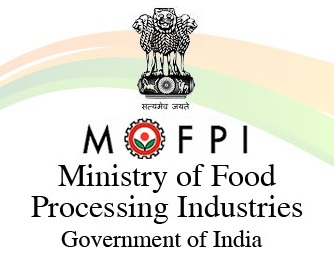PIB News Update: Introduction:
- Considering the importance of availability of labour force data at more frequent time intervals, National Statistical Office (NSO) launched Periodic Labour Force Survey (PLFS) on April 2017. The objective of PLFS is primarily twofold:
to estimate the key employment and unemployment indicators (viz. Worker Population Ratio, Labour Force Participation Rate, Unemployment Rate) in the short time interval of three months for the urban areas only in the Current Weekly Status (CWS)
to estimate employment and unemployment indicators in both usual status (ps+ss) and CWS in both rural and urban areas annually.
- The first Annual Report (July 2017- June 2018) covering both rural and urban areas giving estimates of all important parameters of employment and unemployment in both usual status (ps+ss) and current weekly status (CWS) was released in May 2019. This is the second Annual Report being brought out by NSO on the basis of Periodic Labour Force Survey conducted during July 2018-June 2019.
- Sample Design of PLFS
- The sampling design remains the same as during 2017-18, that is, a rotational panel sampling design in urban areas. In this rotational panel scheme, each selected household in urban areas is visited four times, in the beginning with First Visit schedule and thrice periodically later with a Revisit schedule. In urban area, samples for a panel within each stratum were drawn in the form of two independent sub-samples. The scheme of rotation ensures that 75% of the first-stage sampling units (FSUs)1 are matched between two consecutive visits. There was no revisit in the rural samples. For rural areas, samples for a stratum/sub-stratum were drawn randomly in the form of two independent sub-samples. For rural areas, in each quarter of the survey period, 25% FSUs of annual allocation were covered. In view of these changes, the PLFS estimates are not comparable with the results of Employment Unemployment Survey (EUS) of 2011-12 and earlier years.
Villages and urban blocks are the smallest area units taken as first-stage sampling units (FSU) in rural and urban areas respectively.
- Sampling method
- Sample Size for First Visit during July 2018- June 2019 in rural and urban areas for the Annual Report: Out of the total number of 12,800 FSUs (7,024 villages and 5,776 UFS blocks) allotted for the survey at the all-India level during July 2018- June 2019, a total of 12,720 FSUs (6,983 villages and 5,737 urban blocks) could be surveyed for canvassing the PLFS schedule (Schedule 10.4). The number of households surveyed was 1,01,579 (55,812 in rural areas and 45,767 in urban areas) and number of persons surveyed was 4,20,757 (2,39,817 in rural areas and 1,80,940 in urban areas).
- Conceptual Framework of Key Employment and Unemployment Indicators: The Periodic Labour Force Survey (PLFS) gives estimates of Key employment and unemployment Indicators like the Labour Force Participation Rates (LFPR), Worker Population Ratio (WPR), Unemployment Rate (UR), etc. These indicators are defined as follows:
-
- Labour Force Participation Rate (LFPR): LFPR is defined as the percentage of persons in labour force (i.e. working or seeking or available for work) in the population.
-
- Worker Population Ratio (WPR): WPR is defined as the percentage of employed persons in the population.
-
- Unemployment Rate (UR): UR is defined as the percentage of persons unemployed among the persons in the labour force.
-
- Activity Status- Usual Status: The activity status of a person is determined on the basis of the activities pursued by the person during the specified reference period. When the activity status is determined on the basis of the reference period of last 365 days preceding the date of survey, it is known as the usual activity status of the person.
-
- Activity Status- Current Weekly Status (CWS): The activity status determined on the basis of a reference period of last 7 days preceding the date of survey is known as the current weekly status (CWS) of the person.
- The key PLFS results for 2018-19 are given in the statements annexed while the detailed Annual Report of PLFS, 2018-19 is available on the https://mospi.gov.in.
- The Quarterly Report on PLFS, ending June 2019, is also now released and the same is available at https://mospi.gov.in.
Key Findings of PLFS, Annual Report (2018- 2019)
Statement 1: LFPR, WPR and UR (in per cent) in usual status (ps+ss)* during PLFS, 2018-19 and PLFS, 2017-18 for persons of all ages
| all-India | ||||||||||
| Rates | Rural | Urban | Rural + Urban | |||||||
| male | female | person | male | female | person | male | female | person | ||
| (1) | (2) | (3) | (4) | (5) | (6) | (7) | (8) | (9) | (10) | |
PLFS (2018-19)
| LFPR | 55.1 | 19.7 | 37.7 | 56.7 | 16.1 | 36.9 | 55.6 | 18.6 | 37.5 | |
| WPR | 52.1 | 19.0 | 35.8 | 52.7 | 14.5 | 34.1 | 52.3 | 17.6 | 35.3 | |
| UR | 5.6 | 3.5 | 5.0 | 7.1 | 9.9 | 7.7 | 6.0 | 5.2 | 5.8 | |
| PLFS (2017-18) | ||||||||||
| LFPR | 54.9 | 18.2 | 37.0 | 57.0 | 15.9 | 36.8 | 55.5 | 17.5 | 36.9 | |
| WPR | 51.7 | 17.5 | 35.0 | 53.0 | 14.2 | 33.9 | 52.1 | 16.5 | 34.7 | |
| UR | 5.8 | 3.8 | 5.3 | 7.1 | 10.8 | 7.8 | 6.2 | 5.7 | 6.1 | |
Note: *(ps+ss) = (principal activity status + subsidiary economic activity status)
Principal activity status– The activity status on which a person spent relatively long time (major time criterion) during 365 days preceding the date of survey, was considered the usual principal activity status of the person.
Subsidiary economic activity status– The activity status in which a person in addition to his/ her usual principal status, performs some economic activity for 30 days or more for the reference period of 365 days preceding the date of survey, was considered the subsidiary economic status of the person.
Statement2: WPRs (in per cent) in usual status (ps+ss) by in different levels of education among persons of age 15 years and above during PLFS, 2018-19 and PLFS, 2017-18
| all-India | ||||||||||||
| category | highest level of education successfully completed | |||||||||||
| of persons | not | literate | middle | secondar | higher | diploma | graduat | post | secon | all | ||
| literat | & up to | y | secondary | / | e | graduat | dary | |||||
| e | primary | certifica | e & | & | ||||||||
| te | above | above | ||||||||||
| course | ||||||||||||
| (1) | (2) | (3) | (4) | (5) | (6) | (7) | (8) | (9) | (10) | (11) | ||
| PLFS, 2018-19 | ||||||||||||
| Rural | ||||||||||||
| male | 76.5 | 85.6 | 74.7 | 60.5 | 55.8 | 66.4 | 69.1 | 75.4 | 61.3 | 72.2 | ||
| female | 30.7 | 29.8 | 21.0 | 17.2 | 13.8 | 34.3 | 18.4 | 31.5 | 17.1 | 25.5 | ||
| person | 46.7 | 58.4 | 51.7 | 42.9 | 38.6 | 57.4 | 50.2 | 59.0 | 43.7 | 48.9 | ||
| Urban | ||||||||||||
| male | 72.6 | 80.2 | 73.1 | 60.6 | 52.3 | 73.7 | 69.5 | 79.9 | 63.8 | 68.6 | ||
| female | 21.9 | 20.6 | 15.9 | 9.9 | 9.5 | 34.0 | 23.1 | 36.8 | 17.3 | 18.4 | ||
| person | 38.0 | 49.6 | 46.2 | 37.8 | 32.5 | 63.3 | 49.1 | 59.5 | 43.1 | 43.9 | ||
| Rural + Urban | ||||||||||||
| male | 75.9 | 84.2 | 74.2 | 60.5 | 54.5 | 70.4 | 69.3 | 78.4 | 62.3 | 71.0 | ||
| female | 29.1 | 27.3 | 19.3 | 14.5 | 12.0 | 34.1 | 21.3 | 35.5 | 17.2 | 23.3 | ||
| person | 45.2 | 56.1 | 50.1 | 41.1 | 36.2 | 60.6 | 49.6 | 59.3 | 43.4 | 47.3 | ||
| PLFS, 2017-18 | ||||||||||||
| Rural | ||||||||||||
| male | 78.7 | 85.1 | 73.3 | 61.0 | 54.4 | 59.7 | 66.2 | 75.9 | 60.3 | 72.0 | ||
| female | 29.1 | 26.0 | 18.3 | 15.6 | 12.5 | 34.9 | 18.6 | 31.1 | 16.0 | 23.7 | ||
| person | 46.7 | 56.0 | 50.0 | 43.1 | 38.0 | 52.6 | 48.9 | 59.8 | 43.3 | 48.1 | ||
| Urban | ||||||||||||
| male | 76.2 | 80.2 | 73.8 | 62.1 | 51.5 | 69.8 | 71.1 | 77.6 | 63.9 | 69.3 | ||
| female | 21.6 | 21.7 | 13.8 | 10.6 | 9.9 | 32.8 | 22.8 | 35.7 | 17.3 | 18.2 | ||
| person | 38.7 | 50.7 | 45.3 | 38.8 | 32.3 | 59.6 | 50.2 | 57.1 | 43.1 | 43.9 | ||
| Rural + Urban | ||||||||||||
| male | 78.3 | 83.8 | 73.4 | 61.4 | 53.3 | 65.1 | 68.8 | 76.9 | 61.8 | 71.2 | ||
| female | 27.7 | 24.9 | 16.9 | 13.7 | 11.4 | 33.8 | 21.2 | 34.5 | 16.6 | 22.0 | ||
| person | 45.3 | 54.6 | 48.7 | 41.6 | 35.8 | 56.4 | 49.7 | 57.9 | 43.2 | 46.8 | ||
Statement3: Percentage distribution of workers in usual status (ps+ss) by status in employment during, PLFS, 2018-19 and PLFS, 2017-18
| all-India | |||||||
| Survey period | male | female | |||||
| self- | regular wage/ | casual | self- | regular wage/ | casual | ||
| employed | salaried | labour | employed | salaried | labour | ||
| employees | employees | ||||||
| (1) | (2) | (3) | (4) | (5) | (6) | (7) | |
| Rural | |||||||
| PLFS | 57.4 | 14.2 | 28.3 | 59.6 | 11.0 | 29.3 | |
| (2018-19) | Urban | ||||||
| 38.7 | 47.2 | 14.2 | 34.5 | 54.7 | 10.7 | ||
| Rural | |||||||
| PLFS | 57.8 | 14.0 | 28.2 | 57.7 | 10.5 | 31.8 | |
| (2017-18) | Urban | ||||||
| 39.2 | 45.7 | 15.1 | 34.7 | 52.1 | 13.1 | ||
Note: Detailed Results are available on www.mospi.gov.in.


![Periodic Labour Force Survey (PLFS) – Annual Report [July, 2018 – June, 2019] Periodic Labour Force Survey (PLFS) – Annual Report [July, 2018 – June, 2019]](https://www.indianbureaucracy.com/wp-content/uploads/2020/06/Periodic-Labour-Force-Survey-PLFS-–-Annual-Report-July-2018-–-June-2019.jpg)


